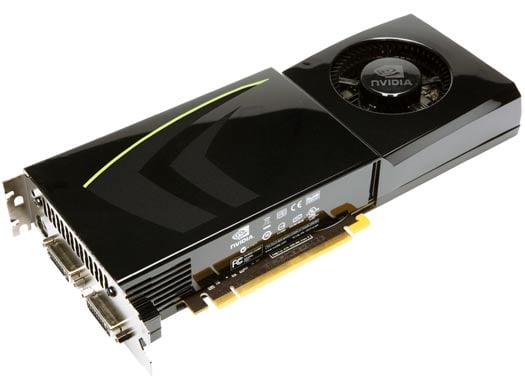NVIDIA GeForce GTX 280 and GTX 260 Unleashed
Introduction and Specifications
 NVIDIA has held a dominant position in the high-end GPU space ever since the introduction of the G80 architecture back in November of 2006. When the G80 first arrived in the form of the GeForce 8800 GTX and the pared-down GeForce 8800 GTS, the cards were clearly superior to anything else at the time in terms of both performance and features. As time has passed, rival ATI has closed the gap somewhat with the Radeon HD 3800 series, and has even surpassed NVIDIA in some ways, for example with DX10.1 and native HDMI with audio support, but through it all NVIDIA offered enthusiast gamers what they arguably desired most - high performance. And it shows in the discreet graphics card market share data.
NVIDIA has held a dominant position in the high-end GPU space ever since the introduction of the G80 architecture back in November of 2006. When the G80 first arrived in the form of the GeForce 8800 GTX and the pared-down GeForce 8800 GTS, the cards were clearly superior to anything else at the time in terms of both performance and features. As time has passed, rival ATI has closed the gap somewhat with the Radeon HD 3800 series, and has even surpassed NVIDIA in some ways, for example with DX10.1 and native HDMI with audio support, but through it all NVIDIA offered enthusiast gamers what they arguably desired most - high performance. And it shows in the discreet graphics card market share data.
NVIDIA eventually refreshed their product line-up with the 65nm G92 GPU, which incorporated support for their PureVideo HD video processing engine with some texture processing tweaks thrown in for good measure as well, but the G92 didn't offer significantly more performance than G80. In reality, cards based on the G92, like the GeForce 9800 GTX, were actually inferior in some ways. With today's launch of their GT200 GPU, however, NVIDIA has truly taken things to the extreme. While the GT200 does borrow heavily from previous generation GPU architectures, it is simply in a class of its own at the moment. And as you'll see, the jump in performance is similar to what we've all gotten use to and experienced again, when the GeForce 8800 GTX was first introduced.
The first two cards based on the GT200 GPU architecture are the GeForce GTX 280 and GeForce GTX 260. As their names suggest, the GTX 260 is a pared down version of the flagship GTX 280. We'll explain the differences in detail a little later on. For now, take a look at the features and specifications posted below.

NVIDIA GeForce GTX 280 Graphics Card
|
|
|




The GeForce GTX 280 and GTX 260 GPUs
Before we get down to the technical nitty gritty, you'll notice NVIDIA has a new naming convention for these cards. GeForce GTX denotes the current high end, with the model number afterward its performance level in relation to other cards in the same family.
Our GeForce 8800 GTX launch article goes in depth on the G80 GPU architecture and explains NVIDIA's CUDA GPGPU technology. Also, our GeForce 8800 GT, 8800 GTS 512MB, 9800 GTX and GX2 pieces encompass the majority of our G92 GPU coverage.
In regard to features, however, the GT200 GPU has a lot in common with the G80 and G92. There is still no DX10.1 support, the video processing engine hasn't changed, and the GPUs are manufactured using TSMC's 65nm process node. Of course there are some significant tweaks to the architecture that increase performance dramatically for not only 3D rendering but stream computing as well.
For more detailed explanations on many of the features shared between the GT200 and NVIDIA's previous GPU architectures, we'd suggest taking a look at a few previous HotHardware articles:






